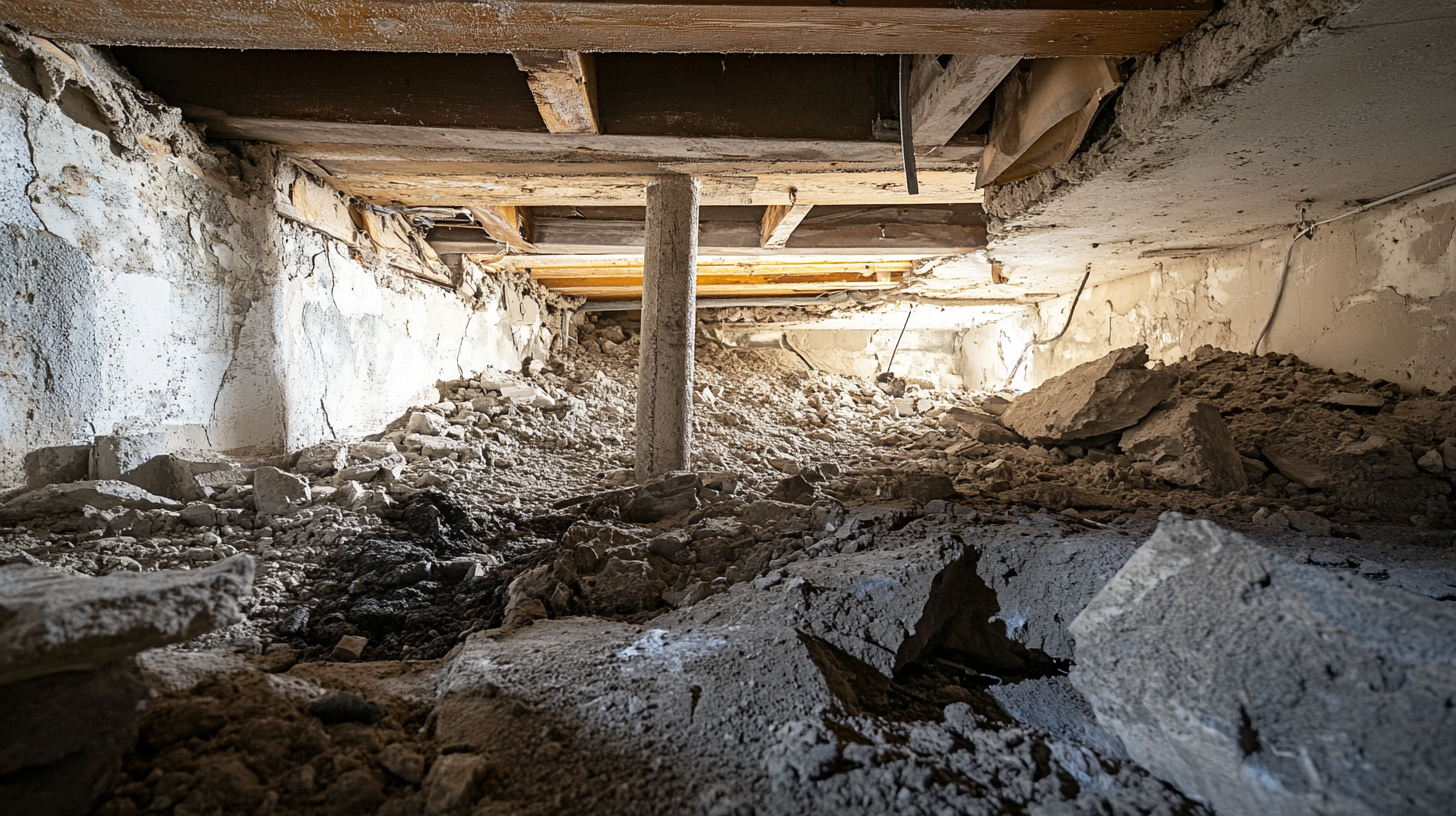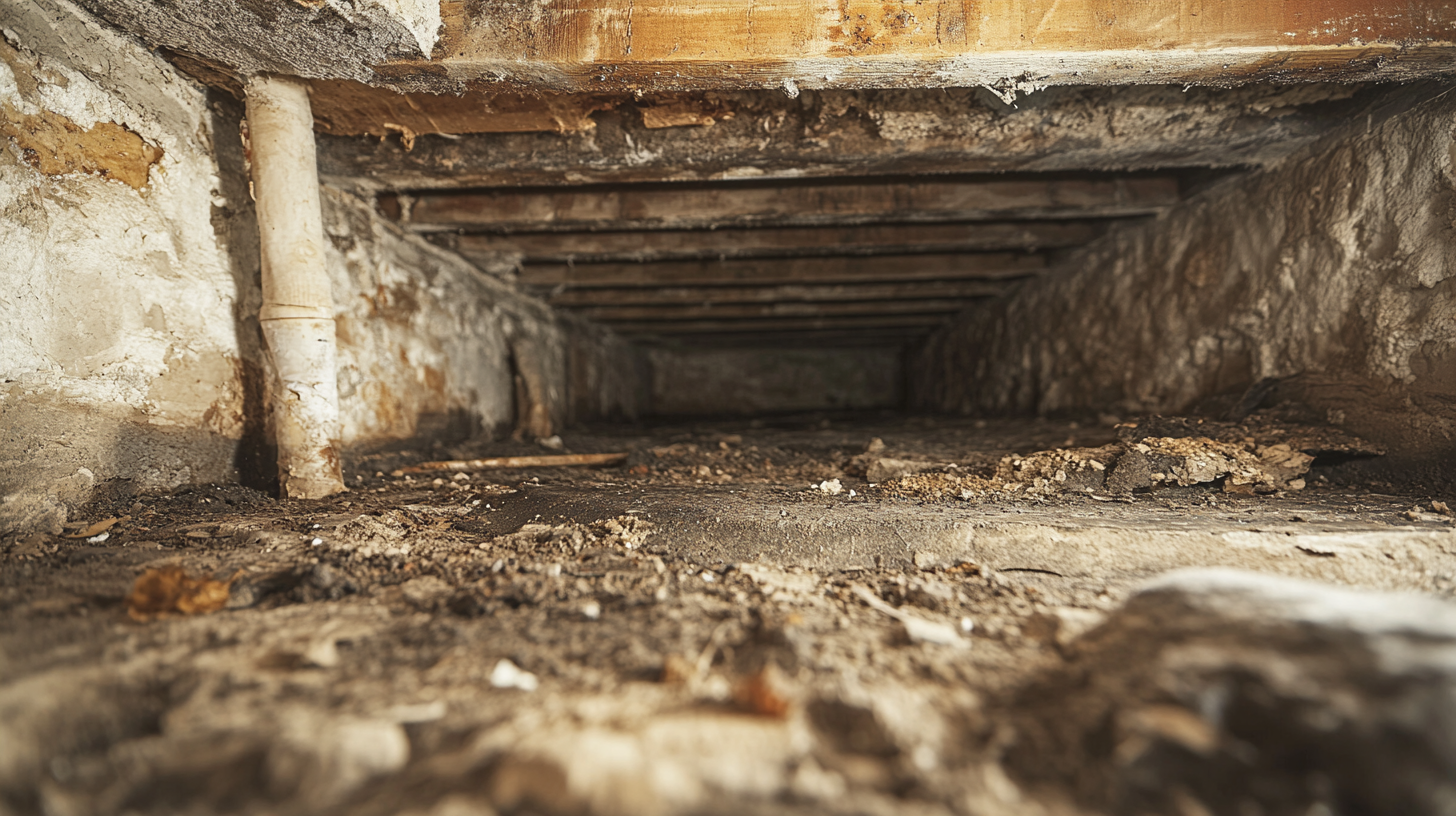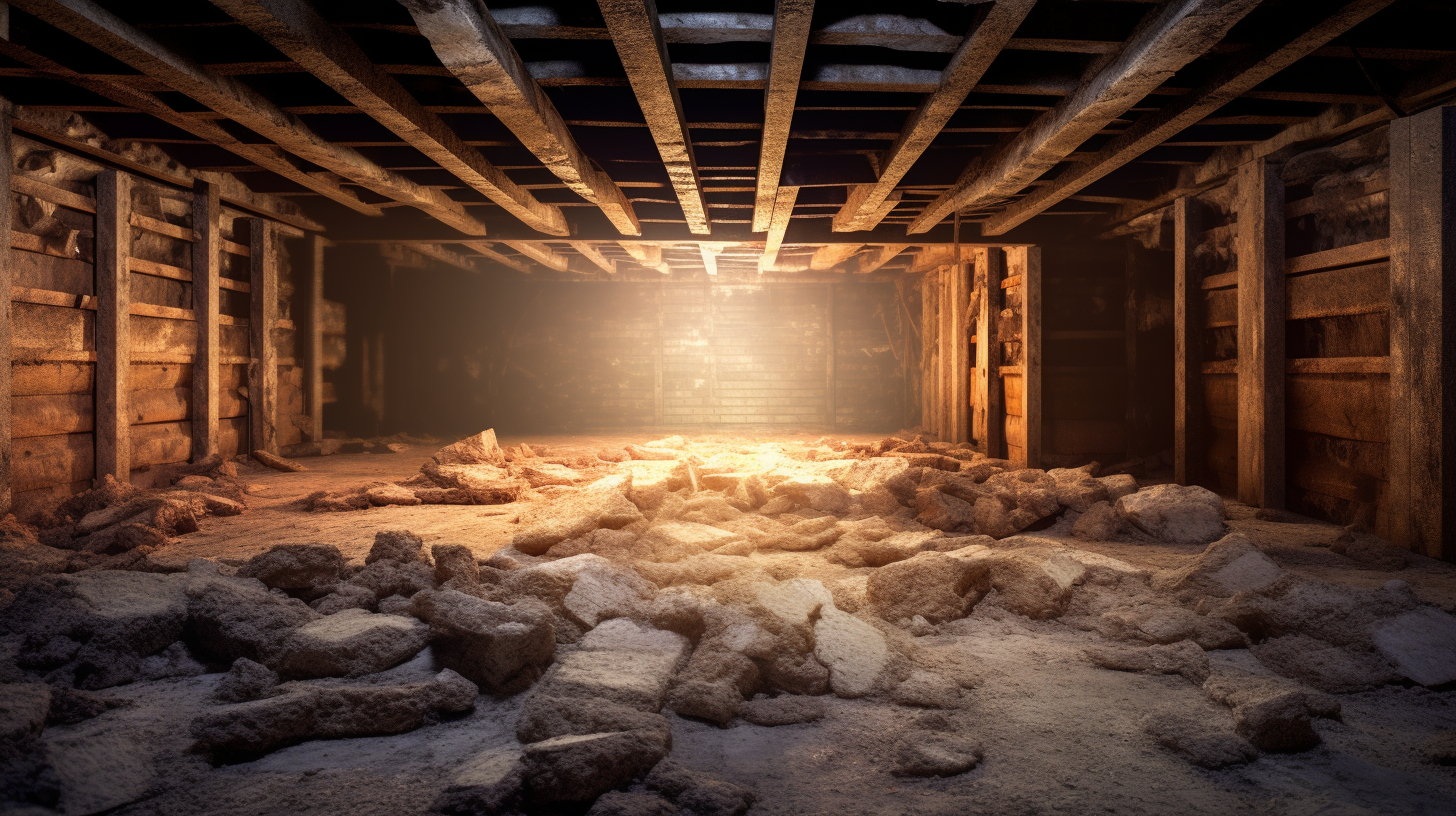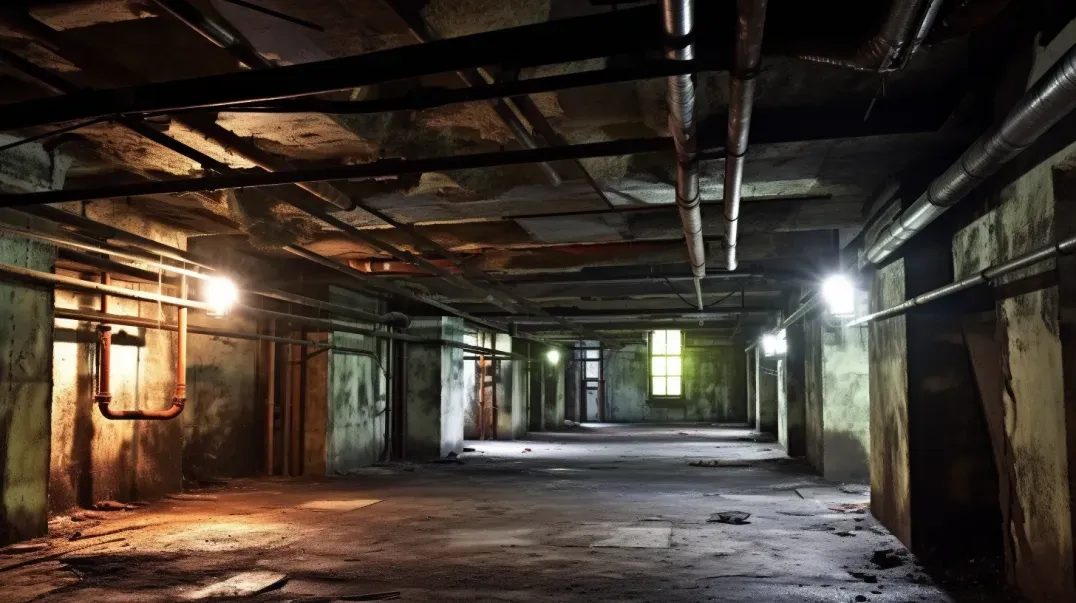Welcome to our comprehensive exploration of crawl space ventilation, a critical component of home maintenance that impacts air quality, energy efficiency, and the structural integrity of your home. As we dive into this topic, we will uncover the historical approaches to crawl space ventilation, discuss the shifts in methodologies influenced by emerging research and technology, and evaluate the effectiveness of various ventilation strategies in today's homes.
Crawl spaces, the narrow areas found beneath most houses, are designed to promote air circulation. However, the traditional methods of ventilating these spaces have come under scrutiny due to evolving understandings of moisture dynamics and building science. This blog will explore how modern strategies are transforming crawl space ventilation, with a focus on creating healthier living environments and enhancing home durability.
We will begin by reviewing the traditional paradigms and the pivotal research that challenged these norms. Following that, we will delve into the innovations in ventilation technology and practices that have redefined industry standards. By integrating expert opinions, current studies, and real-life case studies, this blog aims to provide a detailed and nuanced view of the critical factors at play in crawl space ventilation today.
Join us as we navigate through the complexities of ventilation practices designed to protect your home and health, ensuring you are well-informed to make the best decisions for your living space. Whether you are a homeowner, builder, or enthusiast, understanding the landscape of crawl space ventilation is essential in the pursuit of maintaining an efficient and mold-free home environment.
Stay tuned as we explore the ins and outs of effective crawl space ventilation strategies that meet the demands of modern building requirements and climate conditions, guaranteeing a robust foundation for any home.
The Evolution of Crawl Space Ventilation
A Brief History
Crawl space ventilation has undergone significant transformations over the years, evolving from basic air vents to sophisticated systems designed to combat moisture, mold, and inefficiencies in heating and cooling. Initially, crawl spaces were ventilated naturally through small, passive vents that provided minimal air circulation. This approach was based on the belief that natural air flow would sufficiently dry out any moisture accumulation, thus protecting the home's foundation and understructure.
However, as building technologies advanced and more research was conducted, it became evident that passive ventilation often fell short of providing the necessary air flow, especially in humid climates or in areas with high water tables. In the 1980s and 1990s, the introduction of active ventilation systems and dehumidifiers began to replace or supplement passive vents. These systems used fans and other mechanical means to enhance air circulation and moisture control.
The turn of the millennium saw the advent of encapsulation techniques and science-based solutions tailored to specific environmental conditions. Encapsulation involves sealing the crawl space with a moisture barrier that covers the ground and sometimes the walls, transforming the area into a semi-conditioned space. This method, combined with a dehumidifier, significantly reduces moisture levels, mitigates mold growth, and improves overall air quality, marking a major shift from the simplistic strategies of the past.
Lessons Learned from the Past
The historical progression of crawl space ventilation offers valuable lessons that inform current practices and technological advancements:
- Adequate Ventilation is Crucial: Early methods underscored the importance of ventilation in preventing moisture accumulation that can lead to wood rot, mold, and poor indoor air quality. Modern systems continue to prioritize effective air exchange while addressing the limitations of natural ventilation.
- One Size Does Not Fit All: Initially, crawl spaces were treated uniformly, but it has become clear that geographic and climatic conditions play a significant role in determining the most effective ventilation approach. What works in a dry, arid climate may not be suitable for a humid, tropical climate.
- The Role of Technology and Sealing: With the introduction of active ventilation systems and encapsulation, technology has played a pivotal role in enhancing the effectiveness of crawl space treatments. Sealing the crawl space has emerged as a particularly effective method in humid areas, preventing the ingress of moist air and promoting a cleaner living environment above.
- Ongoing Research and Adaptation: The evolution of crawl space ventilation is marked by continual learning and adaptation. Building codes and recommendations have evolved based on accumulating evidence and technological advancements, highlighting the need for ongoing research and flexibility in approaches.
- Energy Efficiency Concerns: Modern ventilation solutions not only address moisture and air quality issues but also contribute to the overall energy efficiency of the home. Properly ventilated or sealed crawl spaces help maintain consistent indoor temperatures, reducing the load on heating and cooling systems and thereby lowering energy costs.
These lessons from the past underscore the importance of viewing crawl space ventilation as a dynamic component of home construction and maintenance. As we continue to learn from the past and leverage new technologies, the goal remains clear: to ensure that crawl spaces contribute to the health, safety, and efficiency of homes now and in the future. Through this understanding, homeowners and builders alike can make informed decisions that lead to safer, more durable living environments.
Current Trends in Crawl Space Ventilation
Energy Efficiency and Sustainability
In recent years, the focus on energy efficiency and sustainability has significantly shaped the practices surrounding crawl space ventilation. Homeowners and builders alike are now prioritizing eco-friendly and cost-effective solutions that not only improve air quality but also reduce energy consumption and enhance the overall sustainability of homes.
Eco-Friendly Materials and Practices
The shift towards sustainable building materials is evident in the use of insulation and vapor barriers made from recycled and low-VOC (volatile organic compound) materials. These materials help in creating a more sealed and controlled environment, which reduces the need for excessive energy use in heating and cooling the home. Moreover, the installation of energy-efficient, low-wattage fans and dehumidifiers has become a standard practice, as these devices significantly lower the energy costs associated with crawl space ventilation.
Solar-Powered Ventilation Systems
Another innovation in this area is the adoption of solar-powered ventilation fans. These fans operate completely on solar energy, which eliminates electricity costs and reduces the carbon footprint of the home. Solar-powered fans are particularly effective in maintaining low humidity levels and can be easily integrated into existing ventilation systems without the need for extensive modifications.
Enhancing Air Flow Efficiency
Design innovations such as multi-point exhaust systems and calculated duct placement have also improved the efficiency of air exchange. These systems are designed to maximize natural air flows based on wind patterns and home orientation, which further reduces the reliance on mechanical systems and thereby conserves energy.
Smart Home Integration
The rise of smart home technology has brought about a revolutionary change in how crawl space ventilation systems are managed. Automated and remotely controlled systems are becoming increasingly popular, providing homeowners with unprecedented control over their home environments.
Automated Humidity and Temperature Controls
Modern ventilation systems can now be equipped with sensors that continuously monitor humidity and temperature levels in the crawl space. These systems automatically adjust fan speeds and dehumidifier settings based on real-time data, which ensures optimal moisture control without any manual intervention. This not only helps in maintaining structural integrity and air quality but also optimizes energy use, adhering to eco-friendly standards.
Remote Monitoring and Control
With the integration of IoT (Internet of Things) technologies, homeowners can control their crawl space ventilation systems via smartphones or other digital devices. This capability allows for remote adjustments, real-time notifications about system performance, and even automated alerts when the sensors detect moisture levels that could lead to mold growth or other structural issues.
Compatibility with Whole-Home Systems
Crawl space ventilation can now be integrated into broader home automation systems, which allows for coordinated control over the entire home’s climate. This integration can help in managing overall energy consumption more effectively, ensuring that ventilation does not occur in isolation but as part of a holistic approach to energy management and indoor air quality.
Innovations on the Horizon
Advanced Materials and Design
The future of crawl space ventilation is bright, with innovative materials and architectural designs poised to significantly improve how homes breathe. As the industry moves forward, the emphasis is on not only enhancing the effectiveness of ventilation systems but also minimizing their environmental impact.
New Materials
Emerging materials such as advanced polymers and composites are being developed to provide superior moisture barriers and insulation properties. These materials are not only more effective at preventing moisture buildup but also possess greater durability and resistance to mold and pests. Additionally, they are designed to be more environmentally friendly, often made from recycled materials and capable of being recycled themselves after use.
Architectural Innovations
Architects and engineers are also rethinking crawl space designs to optimize natural ventilation and reduce the reliance on mechanical systems. One innovative approach is the integration of vented façades that allow for natural air flow while protecting against water ingress. Another is the use of smart geometrical designs that facilitate effective air circulation throughout the crawl space, preventing any dead zones that can lead to moisture accumulation.
These design innovations not only enhance the structural integrity and longevity of the foundation but also contribute to the overall energy efficiency of the home by stabilizing indoor temperatures more naturally and reducing the load on heating and cooling systems.
Cutting-Edge Technologies
As we look to the future, several cutting-edge technologies are on the cusp of revolutionizing crawl space ventilation. These advancements promise to make systems more efficient, autonomous, and integrated with the smart homes of tomorrow.
Sensor-Driven Ventilation
The development of highly sensitive and durable sensors that can detect minute changes in humidity and temperature is driving the automation of crawl space ventilation. These sensors can automatically adjust the operation of fans and dehumidifiers to maintain optimal conditions, significantly reducing energy consumption and preventing the conditions that lead to mold growth.
AI and Machine Learning
Artificial intelligence (AI) and machine learning are being applied to crawl space ventilation to predict ventilation needs based on historical data and real-time environmental variables. These systems learn from a wide array of inputs, including weather patterns, indoor air quality, and even the specific usage patterns of the house, to optimize ventilation rates and timings without any human input.
Internet of Things (IoT) Integration
IoT technology enables crawl space ventilation systems to be connected to other home automation systems, providing a holistic approach to home environmental control. This connectivity allows for real-time data sharing and control, which can be managed remotely via smartphones or other devices. Homeowners can receive instant notifications if a problem arises, such as increased moisture levels, and can adjust their systems accordingly, even from afar.
Robotic Maintenance
The use of small, automated robots for the inspection and maintenance of crawl spaces is also a promising development. These robots can enter crawl spaces that are typically difficult and hazardous for humans to access and perform tasks such as clearing blockages, inspecting for structural issues, and even repairing minor damage. This technology not only reduces the cost and inconvenience of maintenance but also improves the safety and longevity of the ventilation systems.
The Impact of Climate Change on Ventilation Needs
Adapting to New Environmental Challenges
As climate change continues to alter weather patterns and increase the frequency of extreme weather events, the need for effective crawl space ventilation has become more pronounced. Changing climate conditions are significantly influencing ventilation strategies, compelling homeowners and builders to reconsider traditional approaches and adapt to new environmental challenges.
Increased Humidity and Precipitation
In regions experiencing higher than average rainfall and humidity levels due to climate change, crawl spaces are at increased risk for moisture accumulation and the resultant complications such as mold, rot, and structural damage. Ventilation strategies in these areas are evolving from simple passive venting to more robust systems incorporating active dehumidification and continuous air exchange to manage moisture effectively.
Heat Extremes
Areas subject to higher temperatures and heat waves require ventilation that can cope with extreme heat without compromising the integrity of the home. Enhanced ventilation solutions, including high-capacity exhaust fans and integrated HVAC systems, are being employed to remove excessive heat and maintain cooler crawl space and overall home temperatures.
Ventilation for Air Quality Improvement
As outdoor air quality worsens with pollution and smog, which are exacerbated by climate change, ensuring that indoor air remains clean through effective ventilation is paramount. Systems that can filter and cycle air more efficiently are becoming crucial in maintaining healthy indoor air quality and preventing outdoor pollutants from affecting home environments.
Resilience and Preparedness
Building resilience into crawl space designs is essential for preparing homes to withstand the increasingly severe impacts of climate change, including hurricanes, floods, and prolonged wet seasons.
Flood-Resistant Ventilation
In flood-prone areas, crawl space ventilation systems must be designed to prevent water ingress and promote quick drying following water exposure. Elevated vent openings, flood vents that allow water to flow through the crawl space without accumulating, and moisture-resistant materials are key features of such resilient systems.
Durable Materials and Construction
The use of corrosion-resistant materials that can withstand high humidity levels and water exposure is critical in maintaining the effectiveness and longevity of ventilation systems. Stainless steel components, waterproof fans, and moisture barrier products are examples of materials that contribute to the durability of crawl space constructions.
Smart Monitoring Systems
Installing smart sensors that monitor humidity levels, temperature, and water ingress can greatly enhance a home’s resilience by providing real-time data and allowing homeowners to respond quickly to potential threats. These systems can automate ventilation adjustments and activate emergency protocols to mitigate damage during extreme weather events.
Integrative Designs
Crawl space ventilation cannot be isolated from the rest of the home’s climate resilience strategies. Integrative designs that connect crawl space ventilation with home sealing, waterproofing, and drainage systems are vital. These comprehensive approaches ensure that homes are not only prepared to handle individual weather events but are also resilient to the ongoing and varying impacts of climate change.
The Role of Data and Analytics
Monitoring and Optimization
In the realm of crawl space ventilation, the integration of data and analytics has revolutionized the way systems are monitored and optimized. By leveraging data, homeowners and building managers can fine-tune their ventilation systems to achieve maximum efficiency and comfort, ensuring that the indoor environment remains healthy and energy usage is minimized.
Real-Time Monitoring
Utilizing sensors equipped within crawl spaces, data on humidity levels, temperature, and air quality can be collected in real-time. This data allows for continuous monitoring, which is crucial in maintaining the optimal performance of ventilation systems. By analyzing this information, systems can automatically adjust settings such as fan speed and dehumidifier activity to respond to the slightest changes in environmental conditions.
Enhanced Efficiency
Data analytics enable the detailed assessment of how effectively a ventilation system is operating. By understanding airflow patterns, temperature gradients, and moisture levels throughout the crawl space, inefficiencies can be identified and addressed. For instance, areas of the crawl space that are prone to dampness can receive increased air circulation. This targeted approach not only improves the overall environment but also reduces the energy burden by preventing over-ventilation.
Customized Comfort Settings
Through the analysis of collected data, ventilation systems can be finely adjusted to cater to the specific needs and preferences of the household. This customization goes beyond simple temperature and humidity control, incorporating factors like seasonal variations and occupancy patterns to create a consistently comfortable and healthy living space.
Predictive Maintenance
The application of data analysis extends into the maintenance of crawl space ventilation systems. Predictive maintenance utilizes the data collected by sensors to foresee potential issues before they become serious, allowing for timely interventions that can prevent costly repairs and extensive damage.
Anticipating Failures
By continuously monitoring the system’s operational parameters, analytics can identify trends and patterns that precede equipment failures. For example, an increase in power consumption by fans or a gradual decline in dehumidifier efficiency can indicate developing problems that, if addressed early, can be rectified more easily and cheaply.
Scheduling Preventive Repairs
Data-driven insights assist in creating effective maintenance schedules that operate on an as-needed basis rather than at fixed intervals. This strategy ensures that parts are replaced and repairs are made just before likely failures, thereby extending the lifespan of the system and avoiding the downtime and expenses associated with unexpected breakdowns.
Reducing Costs
Predictive maintenance not only helps in maintaining the structural integrity of the home but also optimizes financial expenditure over time. By preventing emergency repairs and inefficient operation, homeowners can significantly reduce the overall costs associated with their crawl space ventilation systems.
FAQs
Contact Trench Guys Today!
Trench Guys will do everything we can to ensure your experience with us is excellent.
Request A FREE Estimate
Request a Free Estimate Form
Checkout Recent Post




Got a Question? We’re Here to Help.
You can arrange an appointment or make an enquiry by phone or email, orget in touch to us via our contact form.



